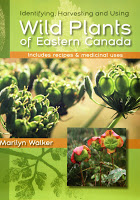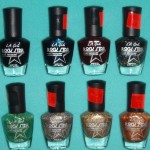I had heard that dandelions, that common yellow weed, is a source of nutrition for foragers. Proving such to myself and others has been difficult.
 I began with what I thought was a logical choice: The Forager’s Harvest by Samuel Thayer. Sadly, only a quick mention is made about the weed’s food value. Yes, it is edible, just not very tasty. Still, it would be nice to know how to eat it. Nonetheless, this book covers a variety of topics, with well-thought-out instructions for identification, gathering specific types, storing and timing the harvest. I was also intrigued by the write-up about cattails; not only do they have four veggie parts, but the pollen makes a yummy flour substitute and one part is made of nutritious starch.
I began with what I thought was a logical choice: The Forager’s Harvest by Samuel Thayer. Sadly, only a quick mention is made about the weed’s food value. Yes, it is edible, just not very tasty. Still, it would be nice to know how to eat it. Nonetheless, this book covers a variety of topics, with well-thought-out instructions for identification, gathering specific types, storing and timing the harvest. I was also intrigued by the write-up about cattails; not only do they have four veggie parts, but the pollen makes a yummy flour substitute and one part is made of nutritious starch.
 I found nothing about dandelions in MicMac Medicines: remedies and recollections by Laurie Lacey. However, I did discover an interesting list of teas: alder bark, beech leaves, red clover, and even pine needles (supposedly a cold-fighting tea, as confirmed in Hilary Stewart’s Drink in the Wild). Both books are rich with clear, black and white plant illustrations. Drink in the Wild contains more details and instructions, while MicMac Medicine contains more about the cultural usage.
I found nothing about dandelions in MicMac Medicines: remedies and recollections by Laurie Lacey. However, I did discover an interesting list of teas: alder bark, beech leaves, red clover, and even pine needles (supposedly a cold-fighting tea, as confirmed in Hilary Stewart’s Drink in the Wild). Both books are rich with clear, black and white plant illustrations. Drink in the Wild contains more details and instructions, while MicMac Medicine contains more about the cultural usage.
 I tried the Peterson Field Guide: Eastern / Central Medicinal Plants and Herbs by Steven Foster and James A. Duke. Great colour photos. A table of contents that’s easy to use. Nothing on dandelions, though. It did specify white pine for colds and coughs. Longleaf pine was a folk remedy for abdominal tumors and shortleaf pine makes pitch tea, a quality laxative. Not to be mixed up.
I tried the Peterson Field Guide: Eastern / Central Medicinal Plants and Herbs by Steven Foster and James A. Duke. Great colour photos. A table of contents that’s easy to use. Nothing on dandelions, though. It did specify white pine for colds and coughs. Longleaf pine was a folk remedy for abdominal tumors and shortleaf pine makes pitch tea, a quality laxative. Not to be mixed up.
But then…ah HA!
 Wild Coffee and Tea Substitutes of Canada, by Nancy Turner and Adam Szczawinski, claims dandelion roots can be roasted and ground and brewed like tea!
Wild Coffee and Tea Substitutes of Canada, by Nancy Turner and Adam Szczawinski, claims dandelion roots can be roasted and ground and brewed like tea!
Wild Plants of Eastern Canada: identifying, harvesting and using, by Marilyn Walker has four pages on dandelion cuisine! Leaves can be eaten raw like watercress or boiled like spinach, especially when their young. Leaves contain iron, calcium, potassium, vitamins A, B, and C, and copper. Petals can make a ‘clear, golden wine’; dried leaves can brew an herbal beer.
Success! Yes, dandelions are food. Sadly, the coffee is decaf.


